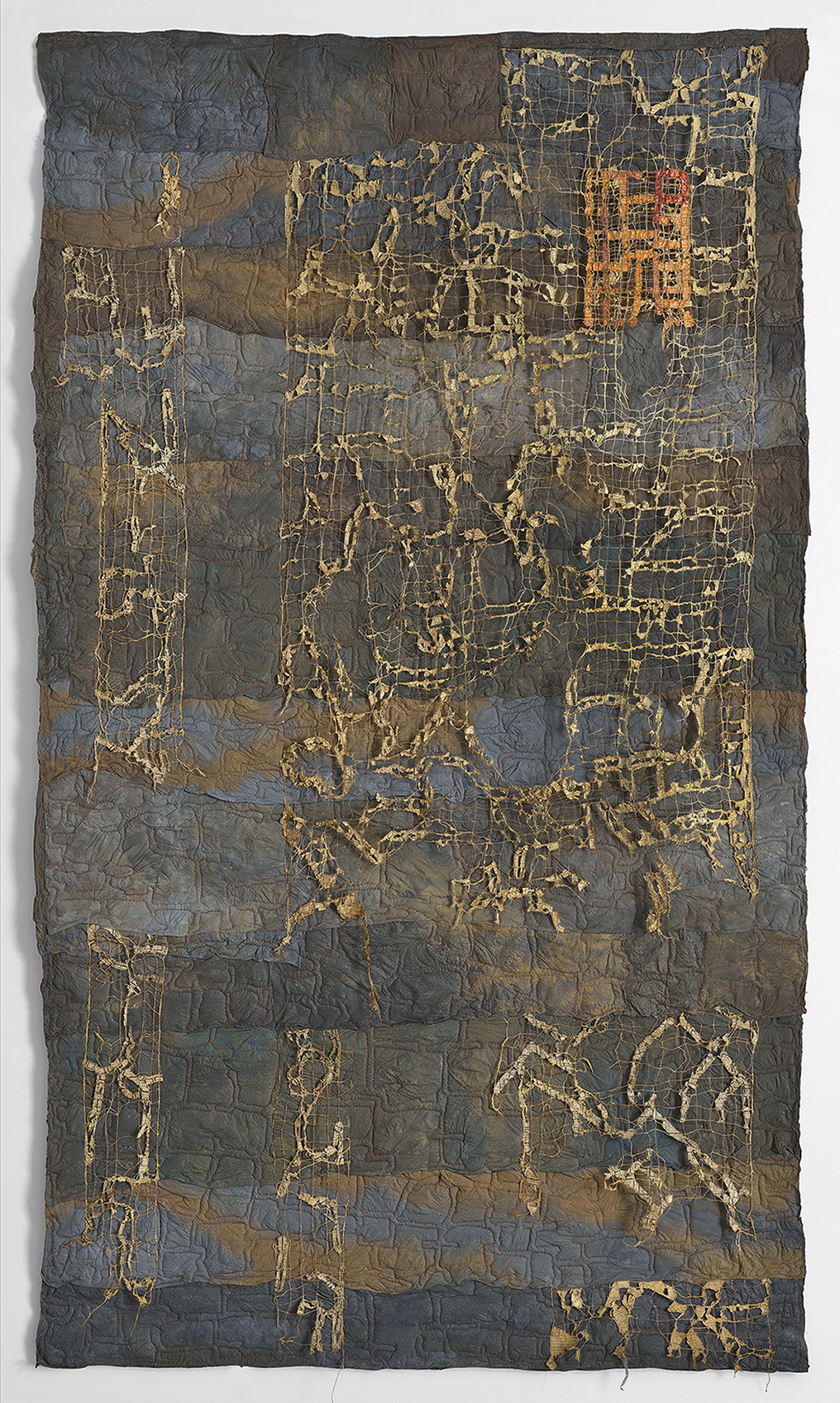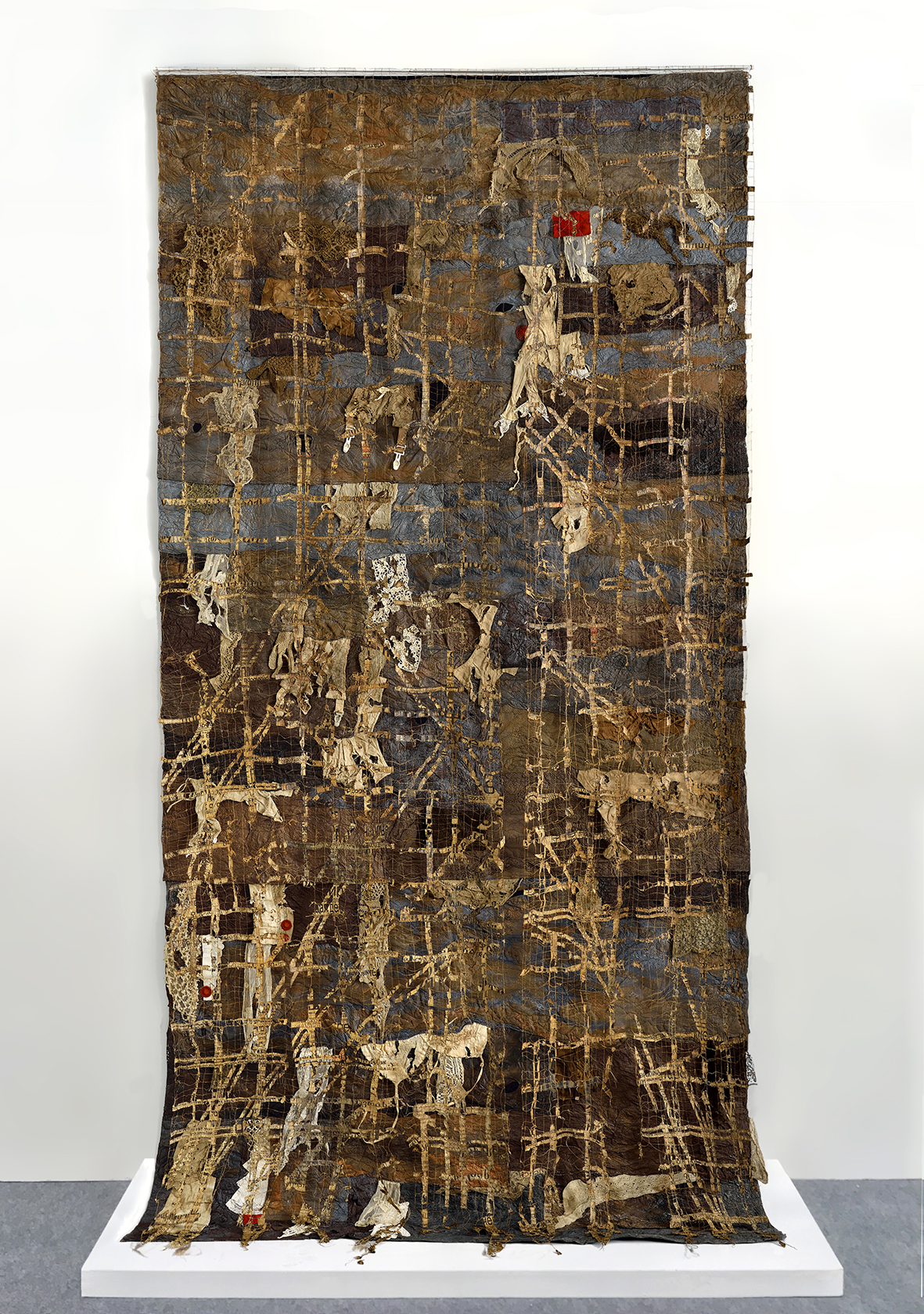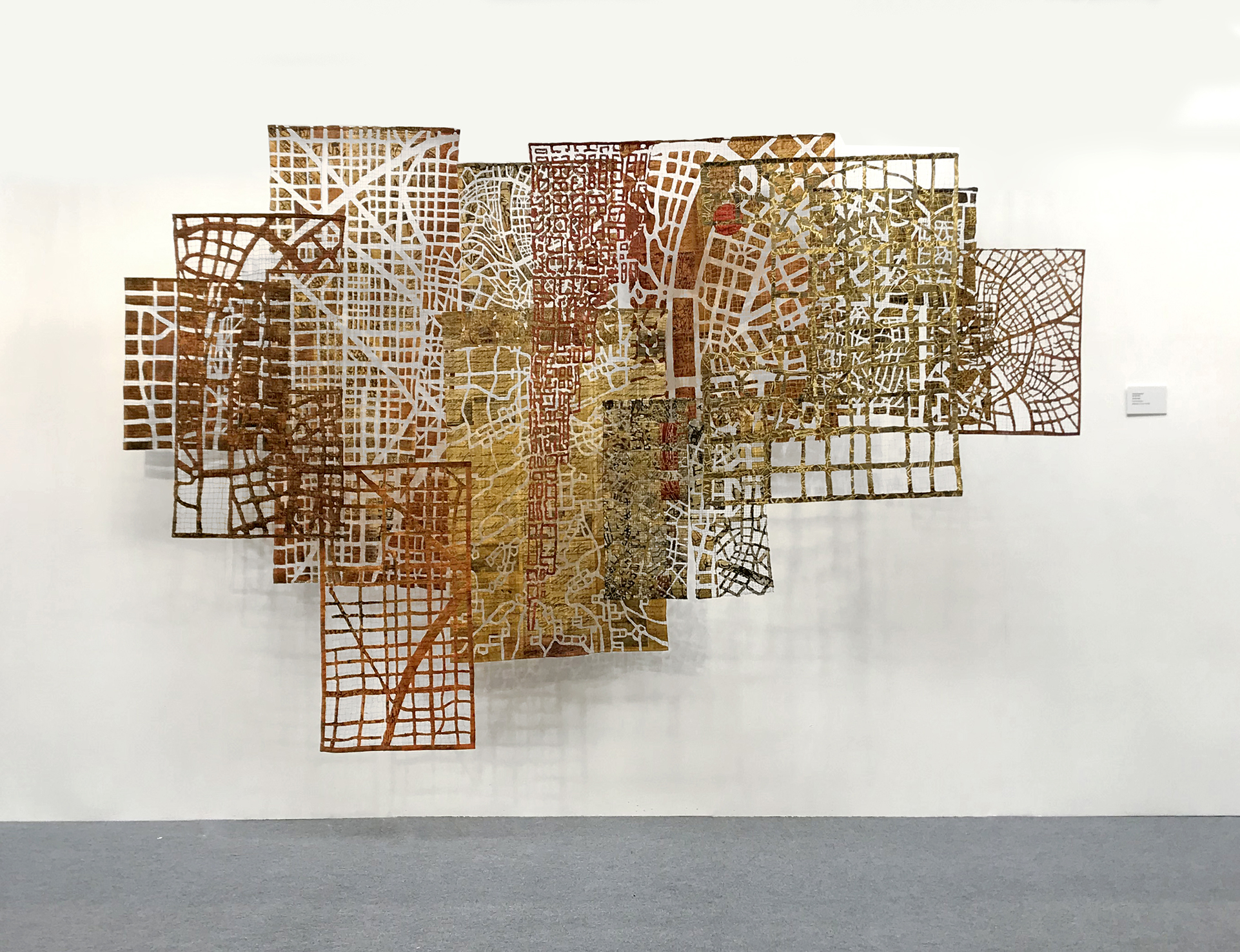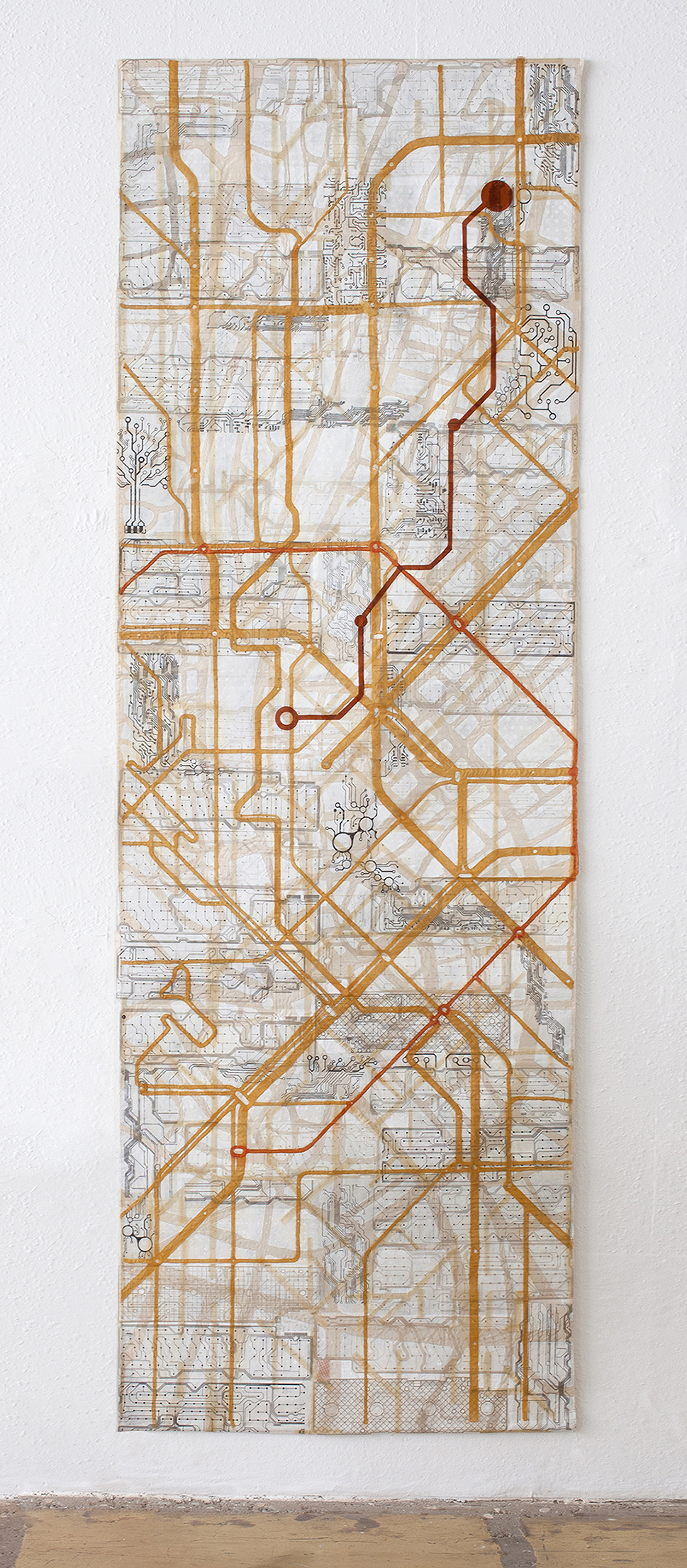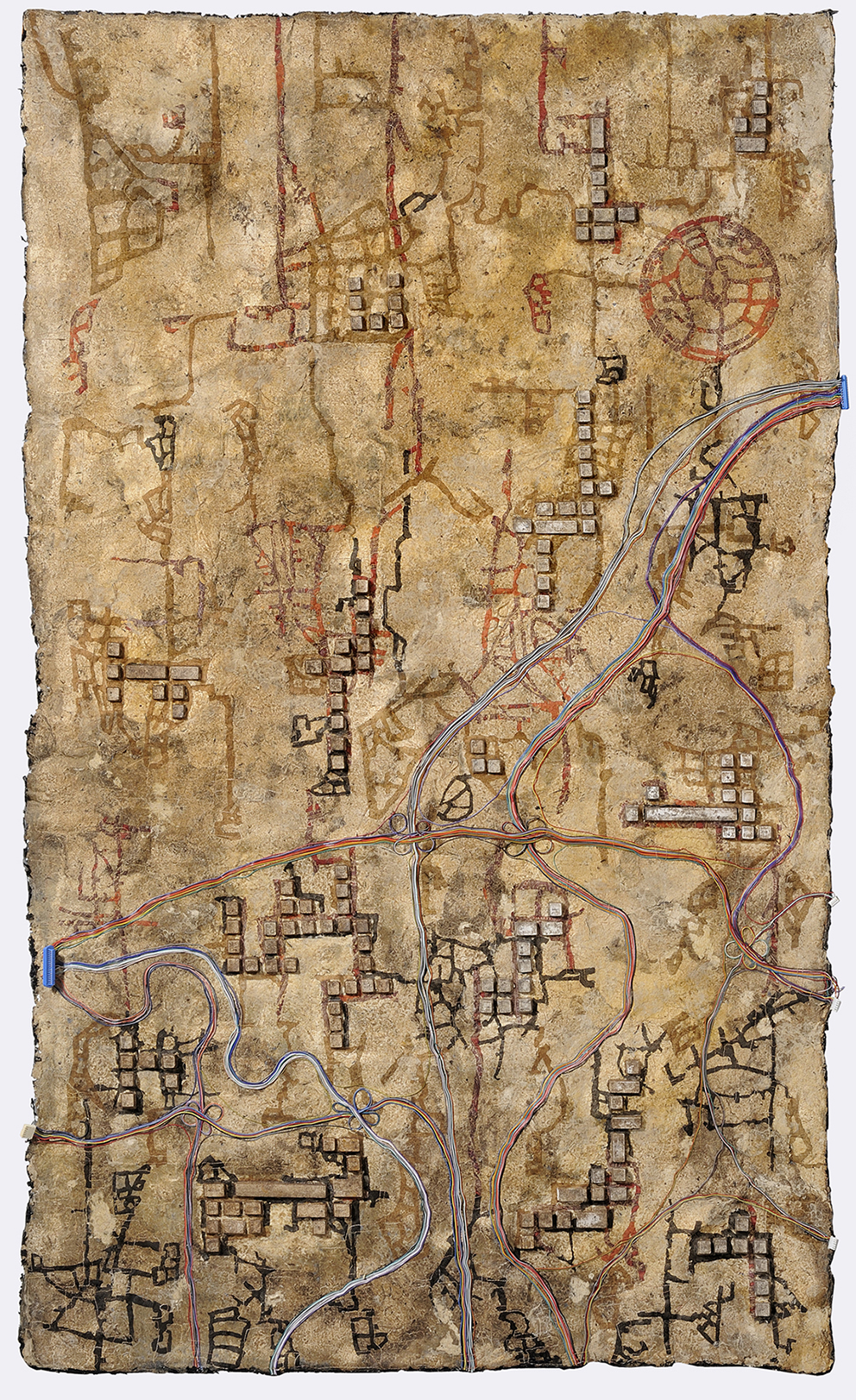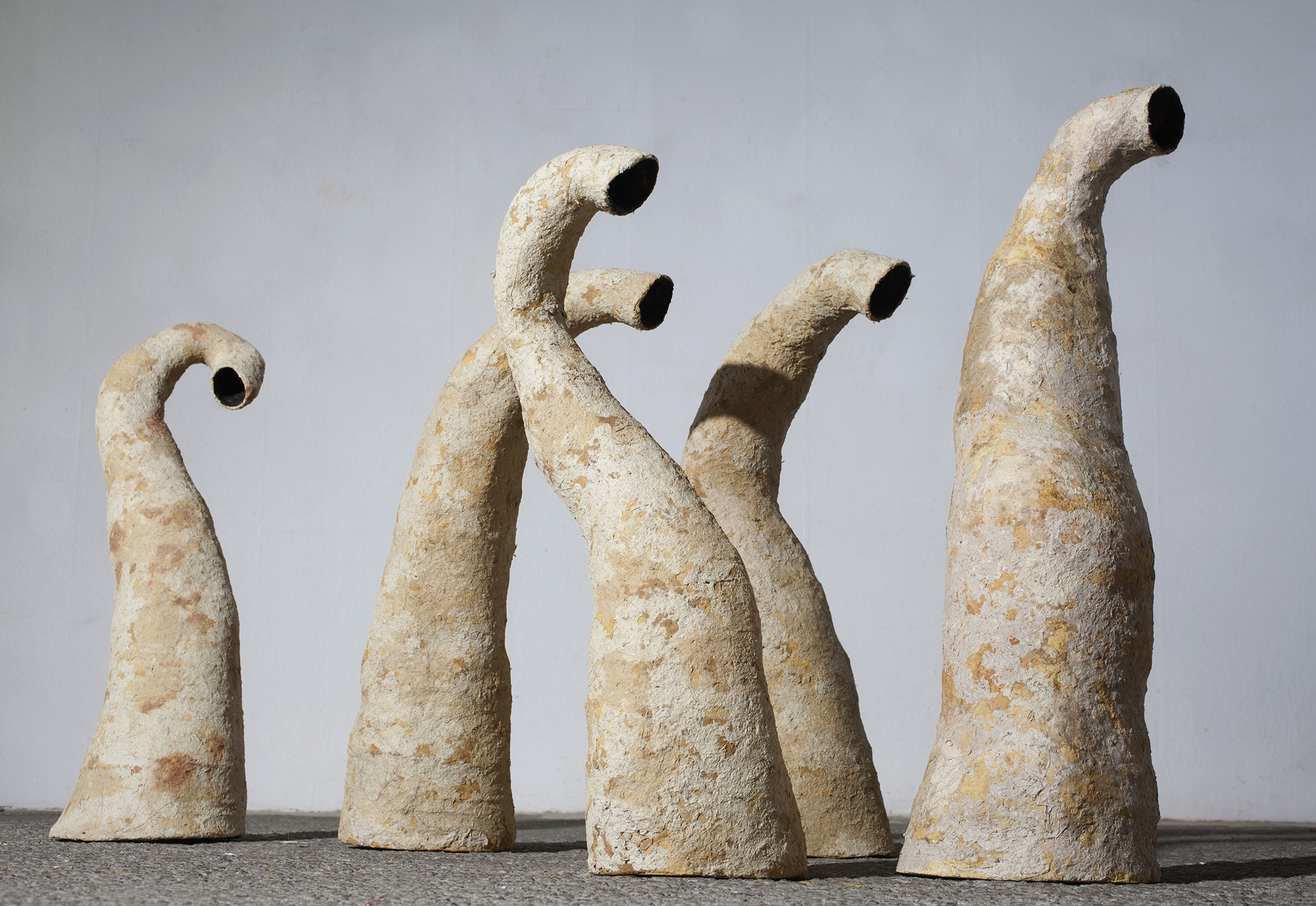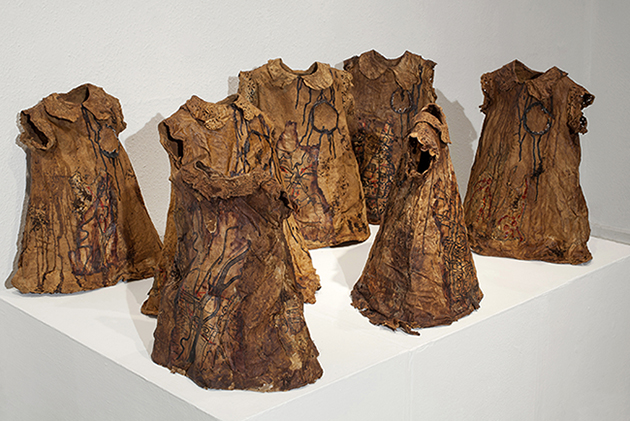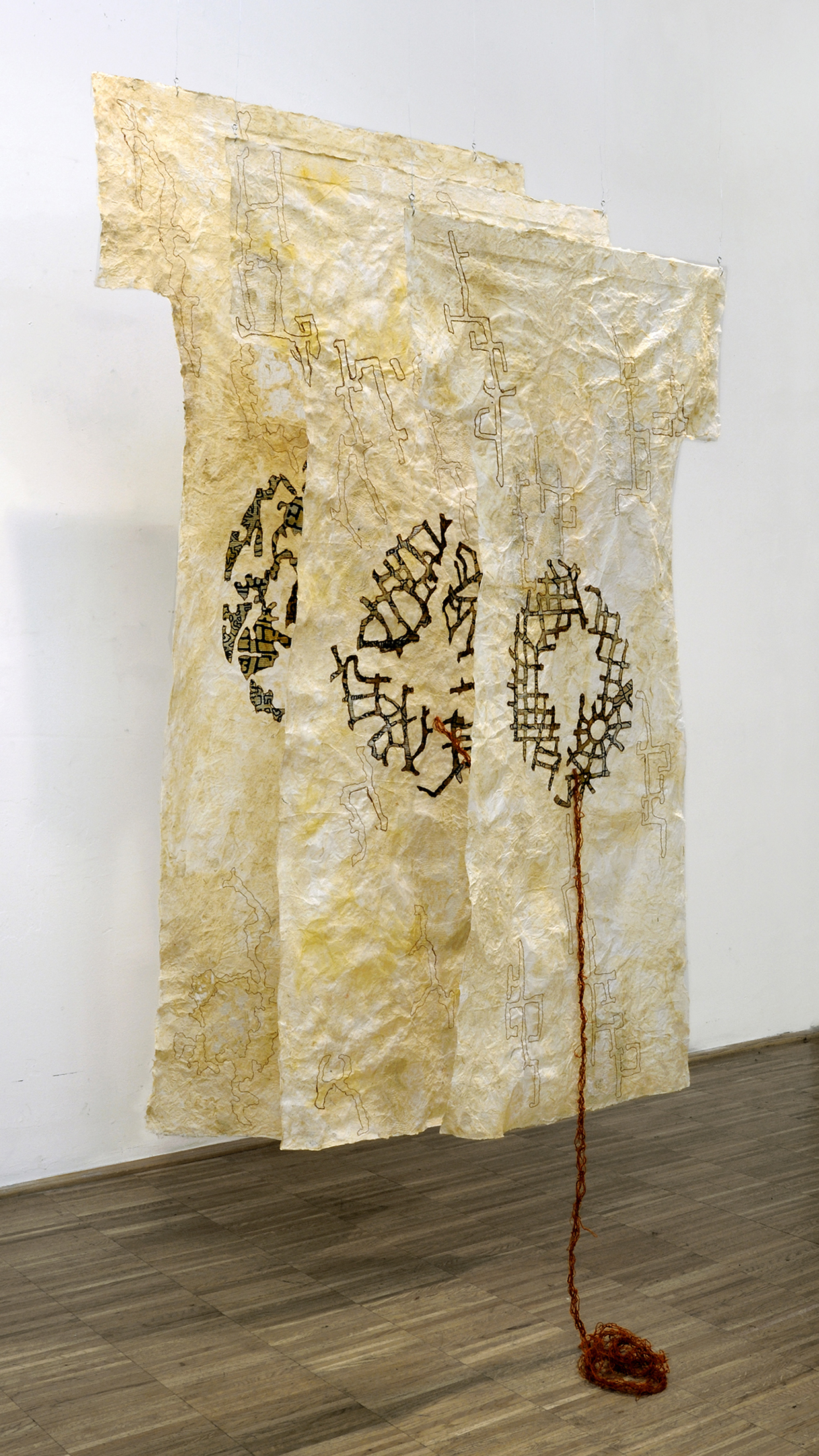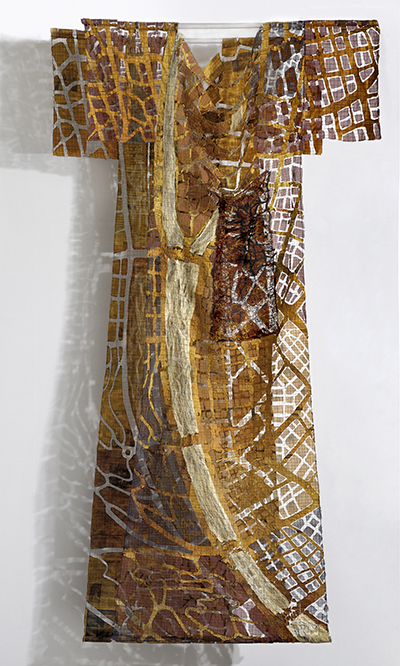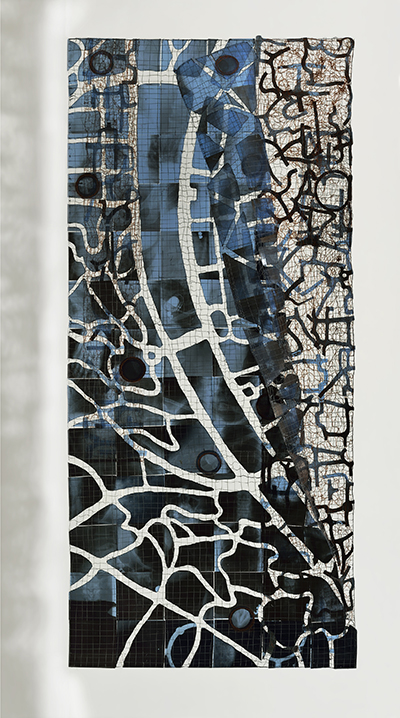Eszter Bornemisza
De Profundis, 2019
Canvas, painted, heat shrunk plastic, newspaper, thread 170 x 95 cm
I experimented with various materials to find an earth-like one, when I found painted, heat shrunk plastics appealing for this purpose. I combined it with one of my earlier netted city-maps that were distressed in a fast running steam. The fragmented street networks seemed to emerge from the profounds.
Eszter Bornemisza
Waste-Borough, 2019
Canvas, painted, heat shrunk plastic, vintage garmet bits, newspaper, thread 275 x 150 x 15 cm
For generations we have been desperately hoarding things. Prized items of clothing are dumped on newer generations who already have closets overflowing. Stuck in a rut of mindless consumption we keep creating trash. Using the three materials - cloth, paper and plastic - that are most responsible for waste production, the piece reminds us of our responsibility in protecting our environment by stopping this cycle.
Eszter Bornemisza
You Are Here, 2015
Overprinted, torn newspaper, threads 180 x 320 x 30 cm
This cloud of partly overlapping maps indicates the feeling of being lost and trying to find your way both physically and mentally in a mass of information. Discovering a little red dot pointing out where you are may help, but sometimes it is just confusing. The work stands as a metaphor for finding identity.
Eszter Bornemisza
Urban Links, 2015
Canvas, paper. computer keyboard, integrated circuit films, organza, plastic 300 x 100 cm
A city map is overlaid with integrated circuit films covered by a grid-like structure representing a map of public transportation system. The underground and circuit boards in computers, are ways to connect people, the former literally and the latter as an essential part of twenty first century living.
Eszter Bornemisza
Technopolis, 2014
Canvas. paperpulp, computer keyboard buttons and wires, organza 160 x 90 cm
Maps both real and subjective are imprints of our living in a system, and like labyrinths they offer a rich ground for associations, deepening our understanding of our life and circumstances. As the urban structure develops, widens, thickens, clots and creates subsystems in history, the cities that live within us undergo an endless and continous evolution.
Eszter Bornemisza
Quo Vadis, 2013
Chickenwire, paperclay. paperpulp selfmade of rush and sedge 120 x 70 x 100 cm
While experimenting with distortion of cone forms shapes emerged, that started to look like humanoids: people abandoning a place, fighting their way forward or leaning against the wind with one of them in doubt.
Eszter Bornemisza
Innocents, 2016
Vintage bed linen, hemp, natural dye, newspaper, dust 80 x 100 x 050 cm
The installation consists of seven little girl's dresses embellished with shapes of adult woman dresses. These were torn out from dyed newspaper overprinted with battle operation maps, attack directions emphasized with red marker. The empty child characters intend to express my concerns about young girls being trained and manipulated for hatered for getting mothers of war.
Eszter Bornemisza
Derivatives, 2012
Cast paper, nets, overprinted newspaper 200 x 100 x 60 cm
Three women’s nightshirts connected with umbilical cord dropping down to the floor reflect my ideas about generations of urban settlements following each other. The back shirt has prehistoric living quarters, the middle one a medieval town and the nearest one a modern city layout on the belly.
Eszter Bornemisza
City Skins, 2015
Newspaper, silkfloss, organza, threads 250 x 110 x 30 cm
Clothes that we wear are often considered our outer skins, and the place where we live the even outer one. It protects, and enwraps us with warmth, but sometimes just with roughness and smudge.
Eszter Bornemisza
Next Page, 2014
X-ray film, threads 200 x 90 x 5 cm
This work expresses my concerns how and where the city getting developed. Urban planner’s ideas are crossed by business interest making it hard to imagine how the next page of the map book will look.
